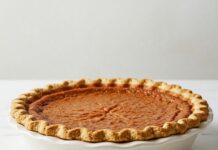Baking soda (sodium bicarbonate) is often touted as a natural and effective weed killer. Here’s a detailed look at how to use baking soda for weed control and its benefits and considerations:
How Baking Soda Works as a Weed Killer
Baking soda can kill weeds by altering the pH level of the soil surface and dehydrating the plant tissues. Its high sodium content is toxic to plants when applied in sufficient quantities, disrupting their cellular function and causing them to die.
Application Methods
1. Direct Application
- Identify the Weeds: Ensure you correctly identify the weeds you want to eliminate.
- Moisten the Weeds: Lightly mist the weeds with water. This helps the baking soda adhere to the leaves.
- Apply Baking Soda: Sprinkle a generous amount of baking soda directly onto the weeds, especially targeting the leaves and the base.
- Monitor and Reapply: Check the weeds after a few days. If necessary, reapply until the weeds are dead.
2. Spot Treatment
- Create a Paste: Mix baking soda with a small amount of water to form a thick paste.
- Apply the Paste: Use a spoon or spatula to spread the paste directly onto the weeds.
- Repeat as Needed: Repeat the application weekly until the weeds die.
3. Preventive Application
- Sprinkle in Cracks: For weeds growing in cracks of driveways or sidewalks, sprinkle baking soda directly into the cracks to prevent weed growth.
- Reapply Monthly: To keep these areas weed-free, reapply baking soda every month.
Benefits of Using Baking Soda for Weed Control
- Natural and Non-Toxic: Baking soda is safe for use around children and pets, making it an attractive alternative to chemical herbicides.
- Readily Available: It is inexpensive and commonly found in most households.
- Selective Effectiveness: Baking soda is particularly effective on small, young weeds and less likely to harm established plants when used carefully.
Considerations and Precautions
- Soil Health: Excessive use of baking soda can alter the soil pH and salinity, potentially harming desirable plants and soil microorganisms.
- Non-Selective: Baking soda does not discriminate between weeds and other plants, so avoid applying it near flowers, vegetables, or other desirable vegetation.
- Not for Large Areas: Due to its potential impact on soil health, baking soda is best used for spot treatments rather than large-scale weed control.
- Weather Conditions: Apply baking soda on a dry, sunny day to maximize its effectiveness. Rain can wash away the baking soda, reducing its efficacy.
Alternative Natural Weed Control Methods
If you’re concerned about the potential impact of baking soda on your garden, consider these alternative natural weed control methods:
- Vinegar: A solution of vinegar (5-10% acetic acid) can be sprayed directly on weeds. It is effective but may require multiple applications.
- Boiling Water: Pouring boiling water directly onto weeds can quickly kill them, especially those growing in cracks or isolated areas.
- Mulching: Applying a thick layer of mulch can suppress weed growth by blocking sunlight and preventing seed germination.
- Manual Removal: Hand-pulling weeds, especially when the soil is moist, can be an effective and immediate way to control weed growth.
- Corn Gluten Meal: This natural byproduct of corn processing can prevent weed seeds from germinating when applied to the soil.










